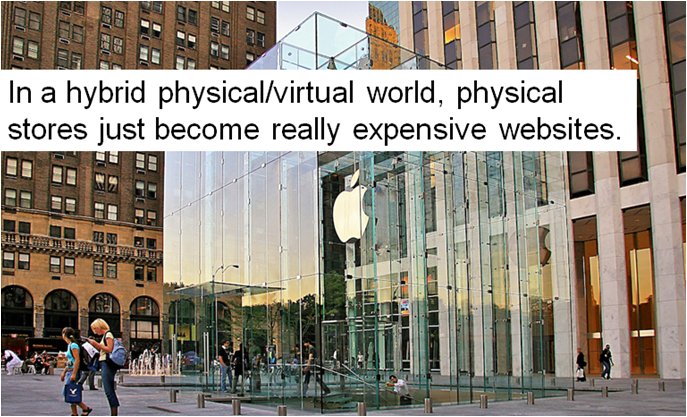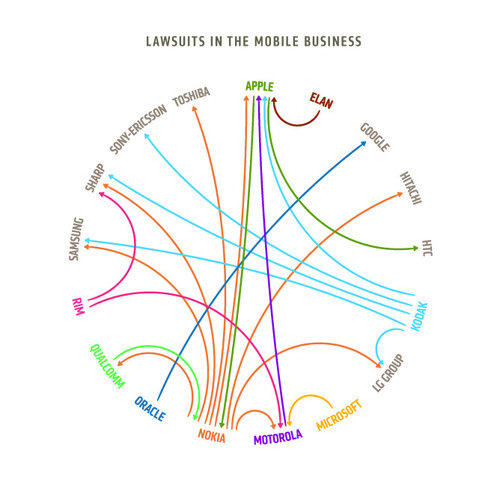
One big idea I’ve been focused on a fair bit lately is what I call “Augmented Retail”. Augmented retail is about the potentially disruptive outcome of the inevitable convergence of mobile technology, ubiquitous connectivity and retail.
Mobile technology is not necessarily good news for your average retailer.
I’m sure by now almost all of you have googled something in aisles just to get some more info on product or to see if you were really getting a good deal. When amazon first launched their barcode scanning application, pundits described it as “amazon declaring war on retailers”. By Q2 of 2010, amazon announced they had already fulfilled a billion dollars worth of commerce from their mobile app. How many of those purchases might have been white-glove Amazon delivery of fine new TV screens ordered straight from the aisles of Bestbuy?
For traditional retailers, the trouble with mobile is that it puts tremendous power in the fingertips of consumers. If they so choose, average consumers could well be better informed on the true value and best pricing of products than even the store manager. By default, smarter and better informed consumers will pressure retail margins.
But dear brands and store owners there is hope. If you are clever, Mobile also gives you chance to build deeper relationships and engagement with your customers. Tomi T Ahonen, who was recently in town for Mobile Innovation Week, has a great post recently (with many real examples!) on what retailers can do with mobile.
So this blog [post] is not about mobile banking or mobile credit cards. It is not about ‘all’ mobile commerce, ie any digital goods sold directly to a phone do not really involve (or need to involve) bricks-and-mortar type of retail. So our music, movies, videogames, airline tickets, insurance etc do not require a separate visit to a retail establishment, because the service (or proof of purchase of service) intended (music, movie, game, air ticket, insurance etc) can be delivered completely to our phone.
That is only a minority of our retail. What of the locksmith, the hairdresser, the dentist office, the florist, the clothing retailer, supermarket and drug store – the typical ‘high street’ or ‘mainstreet’ shopping experience in any small town on the planet. What of them? If you need your locks changed, that cannot be done ‘remotely’ via a mobile phone or the PC. Or your haircut? Can’t be done directly via mobile. Mobile can show you what your new haircut might look like, virtually, but the actual hair still needs to be cut with actual scissors by an actual hairdresser or barber. That can’t be fulfilled via mobile. So lets look at the real bricks-and-mortar retail establishments. What is the role of mobile to them?
Its three-fold. There is ‘marketing communication’ (ie advertising) we can deliver to our customers before they come to our store – and use mobile also to ‘drive foot-fall’ ie drive actual human visitors to our stores…. [In store]
The clever part comes to allow customers to engage with you when they are in-store. … [and After-Store] The part least understood so far, is the after-store experience.
Anyway read the whole thing, good stuff: Lets Talk About Mobile in Retail – Tomi T Ahonen.
While I love Tomi’s examples in this post, they mostly relate to using mobile to drive more business through existing retail business models. There’s even more to think about in terms of how could you change retail models entirely. Can you close sales before the customer even gets to the store? Can you use mobile speed or eliminate checkout lines? Are there premium or follow-on services that you could be delivering or billing for through mobile? Could you use mobile to deliver unique price-discriminated offers to every single customer (e.g. could you sell packaged goods the same way airlines sell airplane seats?)
What is clear is that mobile in retail will be a spectacularly large opportunity over this coming decade. So get busy.


